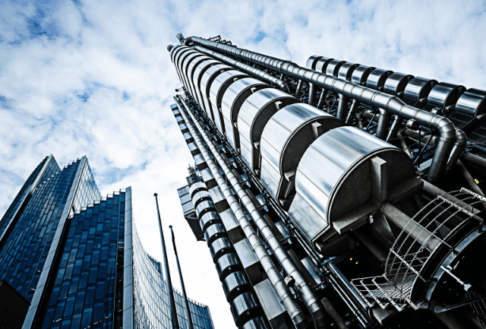Political tensions are running high. Regardless of where you fall on the political spectrum, it’s hard to deny that riots and protests have become a near-constant threat to businesses in many locations. Politically motivated terrorism and mass shootings are also an unfortunate possibility. Brokers can help their clients secure insurance coverage for such events and the resulting disruption.
A Culmination of Many Factors
Pinpointing a single cause for the current political landscape is impossible. Rather, there are many causes, including:
- The lingering socioeconomic impacts of the COVID-19 pandemic. This includes ongoing controversy over whether lockdowns and vaccine requirements were justified.
- The Russia-Ukraine war. The ongoing conflict has impacted supply chains and cybersecurity.
- The Israel-Hamas war. The ongoing conflict has led to pro-Palestinian protests.
- Climate change protests. Climate protestors have blocked roads and attacked works of art to try to increase awareness and spur action.
- Racial tensions and anti-police protests. Brookings estimates that 26 million people have participated in Black Lives Matter protests. According to Axios, protests following the death of George Floyd caused between $1 billion and $2 billion in damage, making it the most expensive protest in insurance history.
- Controversy over immigration policies. To name a few protests that have occurred over the past year, Le Monde says 75,000 people marched in France to protest a French immigration bill, NPR says anti-immigration protests occurred on New York’s Staten Island, and Euro News says anti-immigration protesters marched in Dublin.
- Highly divisive elections along with the recent conviction of Trump. PBS says threats against U.S. public officials have been increasing in recent years.
The Risk of Violence and Property Damage
As political tensions increase, so does the risk of violence and property damage.
Carnegie’s Global Protest Tracker shows that new protests occurred in 83 countries in 2023, including the U.S. Additionally, the Global Peace Index reports that the number of riots increased by 282% between 2011 and 2019, and the U.S. received a “medium” peace score.
Many are bracing for additional protests and riots in 2024 as the U.S. election heats up. The Council on Foreign Relations warns that there is a serious risk of extremist violence associated with the election, including pre-election attacks on candidates and post-election attacks on government buildings and law enforcement officials.
The Business Impact of Politically Motivated Attacks
When politically motivated attacks occur, individuals and businesses caught in the crosshairs may suffer.
- Injury and loss of life. These are the top concerns. Terrorist attacks and active shooters put people at risk. Serious injuries are also possible during riots and protests that turn violent.
- Property damage. Riots may involve broken windows, fires, and other acts of property damage, whereas terrorist attacks could involve bombings and other acts of large-scale destruction.
- Business disruption. Buildings may become inaccessible (or at least hard to reach) due to protests and riots, whereas terrorist attacks and active shooter scenarios may require closing off areas to the public. It may be necessary to cancel events.
- Increased operational costs. The need for increased security or adjustments to normal operations in light of property damage and business disruption can lead to higher costs.
- Employees, customers, and others may allege that a business did not take appropriate measures to ensure their safety.
Risk Mitigation and Crisis Management
In light of the current political climate, business leaders should consider mitigating their risks and preparing for a potential crisis.
- Create an emergency plan. Safety should be the priority. How would employees, customers, and others on the premises stay safe during an incident?
- Create a business continuity plan. Political unrest may interrupt business operations and interfere with profits. Consider how core business operations could continue and what resources you’d need, such as computer files.
- Consider increasing security. Depending on the location and nature of the business, increased security may be a good idea.
- Strengthen cybersecurity. Not all attacks are physical – cyberattacks are also associated with political and social motivations.
- Secure insurance. Insurance coverage can help with various costs associated with terrorism and riots, but it’s important to be aware of exclusions and determine whether additional coverage is needed.
Insurance Coverage for Terrorism and Riot Risks
Although insurance can help with costs related to terrorism and riots, many businesses may lack the coverage needed for these risks.
For example, the Terrorism Risk Insurance Act (TRIA) provides cover for certified acts of terrorism, but its limited scope can exclude other incidents as well as losses involving business interruption but not physical damage. The Terrorism Risk Insurance Act has never covered a single company from terrorism costs and has earned $40bn in revenue for insurance companies, however, Congress is reluctant to end it.
A standalone terrorism policy can provide more robust coverage while being equally cost-effective. However, standard terrorism policies may exclude active shooter incidents, so businesses may want to purchase this as a separate policy.
All-risks commercial property insurance may exclude damage from riots, especially if those riots are politically motivated, and if riots are covered, claims may trigger hefty premium hikes. Either way, carving out riot risks with standalone coverage may be a smart move.
Are you looking for insurance for your clients? Costero offers a wide range of coverage for property damage, business interruption, and liability indemnity. We can help you secure coverage for war, civil war, terrorism, riots, active assailants, event cancellation, and similar risks. Learn more.




